SuperBIT Telescope Captures Space from a Stadium-Sized Balloon
![]()
The Super Pressure Balloon Imaging Telescope (SuperBIT) was recently carried about 20.5 miles (32.9 kilometers) above Earth’s surface on a massive NASA helium balloon, capturing the balloon-based telescope’s first research images.
As seen on Space.com, the SuperBIT launched on April 16 from Wānaka, New Zealand, and captured its first research images of the Tarantula Nebula and Antennae Galaxies.
The SuperBIT Telescope’s altitude enables it to observe celestial objects in a “near-space” environment. SuperBIT floats above 99.5 percent of Earth’s atmosphere, allowing it to take high-resolution images similar to those of the Hubble Space Telescope (HST), albeit with a wider field of view than the HST.
Advantages of Balloon-based Observation
Balloon-based telescopes offer numerous advantages relative to space-based telescopes, not the least of which is cost. A super pressure balloon such as SuperBIT can circumnavigate Earth for up to 100 days, gathering scientific data at night and charging using solar panels during the day.
According to Durham University in the United Kingdom, one of the collaborators on SuperBIT, the telescope costs about 1,000 times less than an equivalent satellite. SuperBIT costs about $5 million.
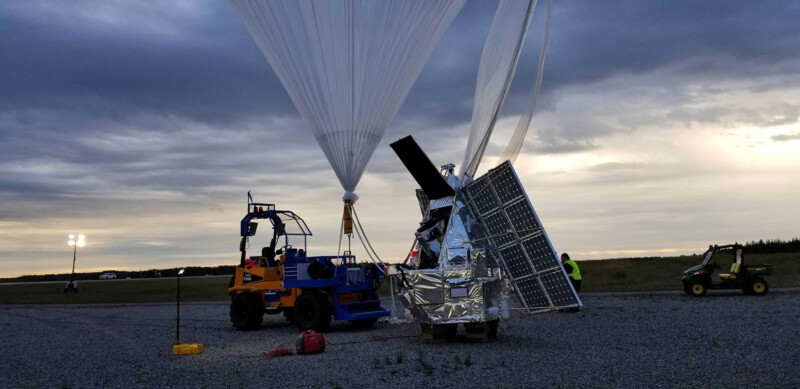
Its operational costs are significantly reduced since the telescope is launched by a NASA helium balloon rather than a rocket. SuperBIT can also return to Earth following observation, safely landing back on Earth thanks to a parachute. The telescope can be continually tweaked and upgraded during its mission.
SuperBIT’s Balloon Is the Size of a Football Stadium
The balloon carrying SuperBIT, which weighs about 3,500 pounds (just under 1,590kg), inflates to around 18.8 million cubic feet (532,000 cubic meters), which Durham University says is the size of a football stadium.
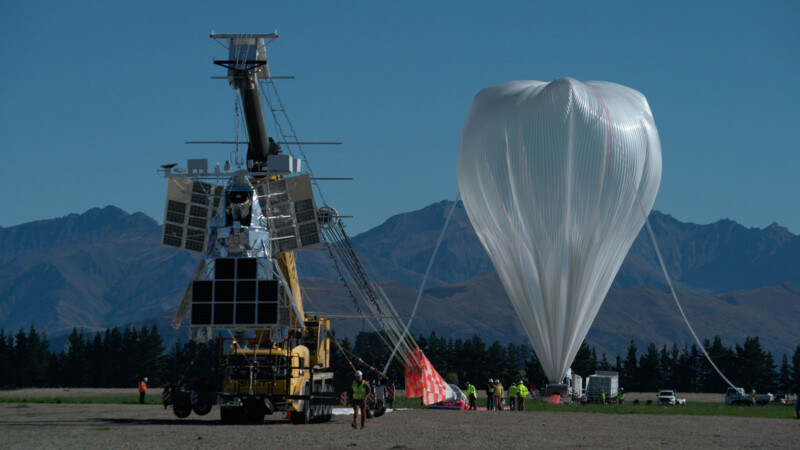
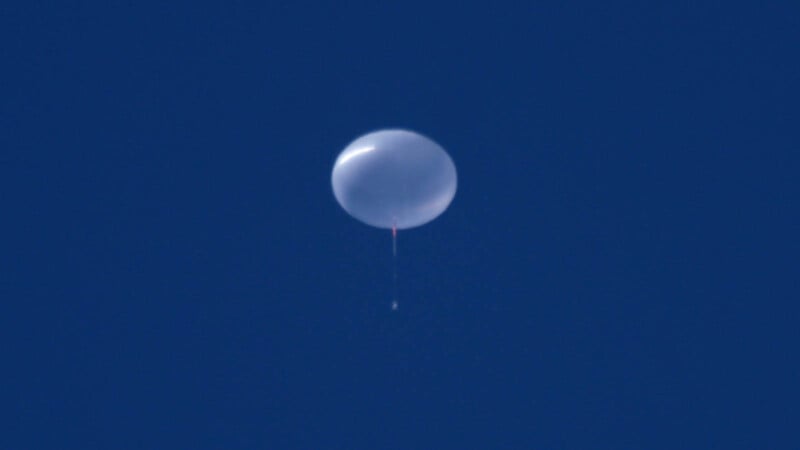
In contrast to many airborne systems, NASA’s super-pressure balloon technology maintains a stable float altitude without needing to drop ballast. The balloon’s design enables a positive internal pressure and keeps its shape even in changing environmental conditions. Many standard heavy-lift zero-pressure balloons can vary in altitude by as much as 8.5 miles (13.7 kilometers) due to changing air temperatures resulting from the day-night cycle.
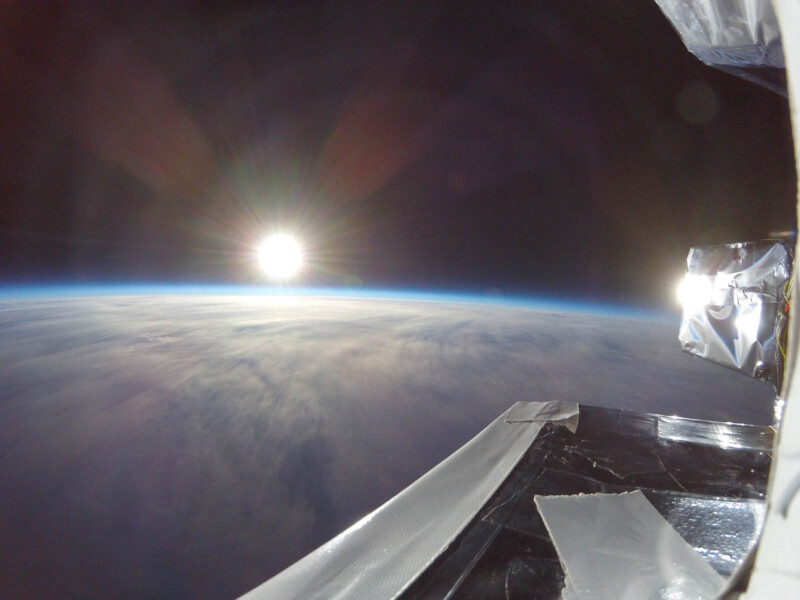
SuperBIT Specifications and Operation
The Superpressure Balloon Imaging Telescope is a 1.64-foot (0.5-meter) wide-field, diffraction-limited telescope. Its optical sensitivity ranges from the near-infrared (900 nm) wavelength to the near-ultraviolet (300 nm). The team is currently working on designing and securing funding for a larger 1.6-meter telescope.
SuperBIT is the first-ever balloon-born telescope that can capture wide-field images with resolution limited only by the laws of physics.
This range is similar to Hubble’s, but SuperBIT offers a broader field of view. SuperBIT’s field of view is 0.5 degrees, whereas Hubble’s is 202-by-202 arcseconds, about 10 times less than SuperBIT’s field of view.
SuperBIT relies upon gravitational lensing measurements of galaxy clusters to infer the presence and quantity of dark matter. While dark matter cannot be directly seen, its effects can be measured by observing how the gravity of massive galaxy clusters, which contain dark matter, bend and distort the light of more-distant galaxies behind an observed cluster.
SuperBIT will test if dark matter particles can bounce off each other. Various theories suggest dark matter might slow down, spread out, or get chipped off during a collision. If researchers can map dark matter leaving a collision, it will help scientists finally learn what dark matter is.
“It takes the gravity from an entire galaxy to move dark matter and SuperBIT will look at clusters of galaxies that happen to be colliding with each other. Essentially, we’re using the largest particle accelerators in the universe, to smash lumps of dark matter and see where the bits fly,” says Professor Richard Massey of Durham University’s Department of Physics.
“If dark matter goes ‘crunch,’ or if bits are chipped off, we could finally start to learn what it’s made of,” Massey continues.
First Research Targets
SuperBIT’s first celestial targets, the Tarantula Nebula and the Antennae galaxies, have been imaged in spectacular detail.
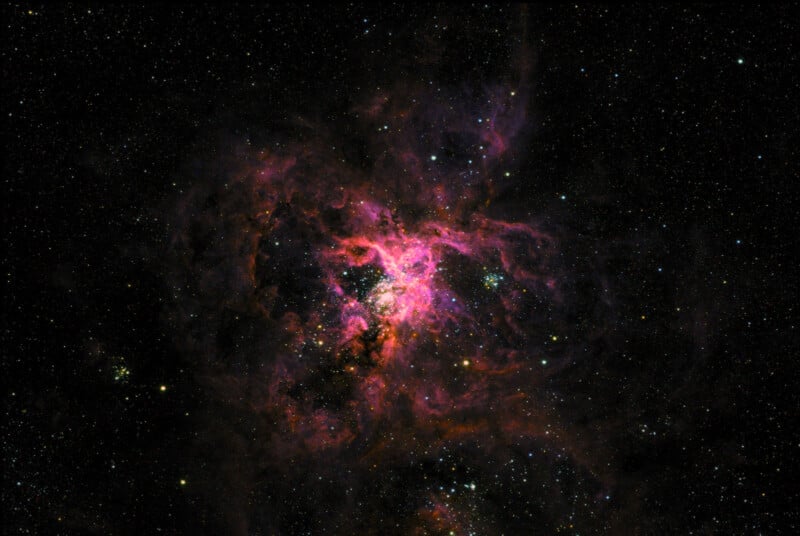
The Tarantula Nebula is a massive star-forming region of ionized hydrogen gas about 161,000 light-years from Earth. Located in the Large Magellanic Cloud, the swirling clouds of gas and dust surround the region’s young stars.
A popular telescope target, the Tarantula Nebula has also been imaged by Hubble and the James Webb Space Telescope.
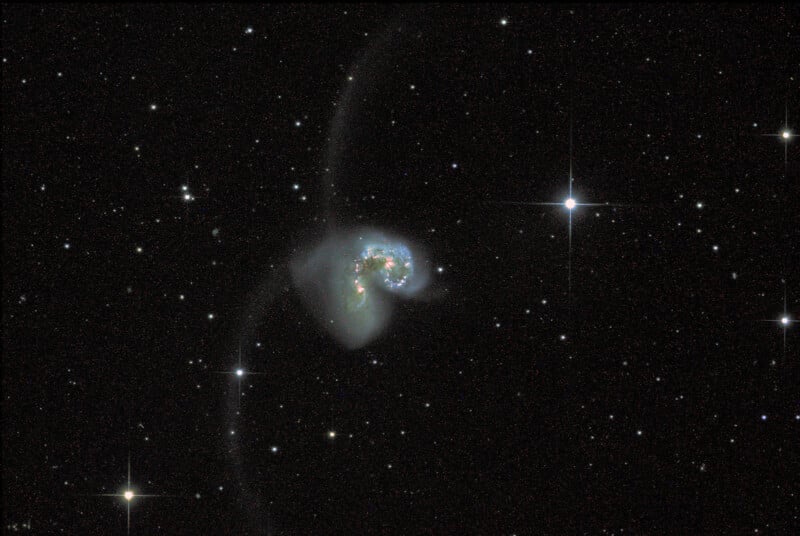
The Antennae galaxies, cataloged as NGC 4038 and NGC 4039, are a pair of large galaxies colliding about 60 million light-years away. Like the Tarantula Nebula, the Antennae galaxies are popular targets for space telescopes. They’ve been imaged by Hubble, the Chandra X-ray Observatory, and the now-retired Spitzer Space Telescope.
SuperBIT Team
SuperBIT is a collaborative project between NASA; Durham University, United Kingdom; the University of Toronto, Canada; and Princeton University in New Jersey. SuperBIT was initially developed at the University of Toronto, with design efforts beginning in 2012. The first engineering test flight occurred in 2015, with additional test flights in 2016 and 2018. Princeton University and Durham University joined the project to assist with engineering improvements and refinements alongside NASA’s Jet Propulsion Laboratory (JPL).
SuperBIT will contribute data and complement the work of the James Webb Space Telescope, the Vera C. Rubin Observatory, and the Nancy Grace Roman Space Telescope.